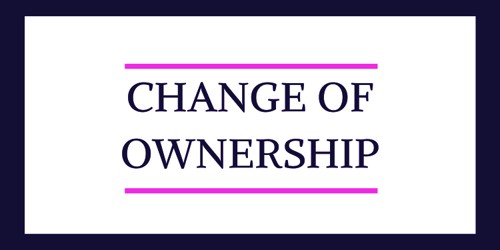Investment Corporation of Bangladesh (ICB) established on 1 October 1976 under the Investment Corporation of Bangladesh Ordinance 1976. It is an investment bank established to accelerate the pace of industrialization and develop a sound securities market in Bangladesh. Initially, the activities of ICB were limited to underwriting public issue of shares, bridge financing, debenture financing and opening/maintaining investors’ accounts. ICB had largely expanded its areas and scope of activities and now provides various types of investment and banking services. Added activities include providing debenture loans to companies and loans to investors on margin trading basis, providing advances against ICB unit certificates, leasing of industrial equipment, managing unit fund and mutual funds, and participating in stock exchange for trading securities. Mutual fund comprising of a wide range of securities allows the participants to obtain the benefit of lower transaction costs in purchasing securities enabling the shareholders to hold more diversified portfolios. The demand for ICB mutual funds is also growing fast and persistent price rise in the market reflects the mismatch between demand and supply. In Bangladesh ICB has pioneered Mutual Funds for the sake of investors and of the capital market. ICB Mutual Funds are independent of one another. To expand its activities and give faculty to small investors ICB first introduced its mutual fund in 1980 with a paid up capital of 50 lac Taka. As this mutual fund was performing well in the capital market ICB started its other seven mutual funds gradually. From the inception till now the Mutual Funds of ICB have proved themselves as very strong and profitable sectors of investment. Their market price and NAV is high even during the bear market. From the history of dividend payment, NAV,P/E ratio, EPS, net profit we can easily understand that ICB mutual funds have a consistency in their performance. The total market capitalization of eight mutual funds is 247.77 crore and total size of fund is 17.75 crore. In 2014 the number of certificate holders of the eight mutual funds is 18724 which were 19799 in 2013. ICB declared record dividend on its eight mutual funds in 2013-2014.The highest dividend of 800% per share was declared on the First ICB Mutual Fund. The dividend declared by the seven other mutual funds are astounding like previous years. Strong performance of the funds is reflected in the market prices of the funds. All the mutual funds are traded significantly above per value in both the bourses. All of these are on the increase every year for which investors have full confidence in these mutual funds. In 2014 the total portfolio cost of the mutual funds is 155.81 crore where the market value of the portfolio is 401.53 crore Taka and the distributable income per certificate is also increasing every year. As a whole the ICB mutual funds have been a valuable and attractive investment now and always.
OBJECTIVES OF THE REPORT:
Objectives of the report are:
- To investigate the different functions performed by different departments of ICB.
- To analysis Performance Evaluation of ICB
- To relate theoretical learning with the practical situation of capital market.
- To gather knowledge that how investors can do business with ICB and its mutual funds.
- To review the practical aspect of the Investment Corporation of Bangladesh.
- To go through all departments of the corporation and observe how the works are going on.
BACKGROUND OF ICB:
Investment Corporation of Bangladesh (ICB) is a statutory corporation. It is mainly an investment bank. An investment bank is a financial institution, which mobilized fund from the surplus economic units by savings securities and developed funds to the deficit economic unit also by buying or underwriting securities. After liberation in view of social economic changes, the scope for private sector investment in the economy was kept limited by allowing investment in projects up to Tk. 25 lac. The new investment policy, which was announced in July 1972 provides for an expanded role of private sector by allowing investment in a project up to Tk. 3 crore. The ceiling has further being raised to Tk.10 crore in spite of the adequate facilities and incentives provided to the private sectors encouraging response was not for the coming. One of the reasons among other was the lack of institutional facilities, which provides underwriting support (Like former ICB) to industrial enterprise that was required to raise much need equity fund. Thus, the need for reactivation for capital market, stock market was keenly felt.
The Investment Corporation of Bangladesh was established on 1st October 1976, under “The Investment Corporation of Bangladesh Ordinance, 1976 “(NO. XL of 1976). The establishment if ICB was major step in a series of measures undertaken the Government of accelerate the pace of industrialization and to develop a well-organized and vibrant Capital market particularly securities market in Bangladesh ICB caters to the need of institutional support to the need of institutional support to meet the equity gap of the industrial enterprises. In view of the national policy of accelerating, the rate of savings and investment to foster enactment of the Investment Corporation of Bangladesh (Amendment) Act 2000 (No. XXXIV of 2000), reforms in operational strategies and business policies have been taken place by establishing and operating subsidiary companies under ICB.
ACTIVITIES OF SUBSIDIARY COMPANY’S:
ICB Capital Management Limited:
ICB Capital Management Limited can act all types of merchant banking business and to act as a member of financial markets, portfolio managers issuer, underwriting, counderwriters, sub-underwriters, lending activities, to finance venture capital leasing activities, bridge financing and provide long-term loan, discounting bill of exchange, providing credit facilities through credit cards, internet counsel regarding investment and industrial entity.
ICB Asset Management Company Limited:
ICB Asset Management Company Limited can manage assets of any trustee or funds of any type and/or character and to hold, acquire, sell or deal in such assets or any trusts or funds, to manage and administer provident or pension funds, to organize various schemes of different types for trusts or funds, to take part on the management of mutual fund operations, to operate, conduct, accomplish and establish services for industrial, trading and commercial activities, to invest funds in shares and securities, to carry on business as financial and monetary agents to merchandise shares and other securities.
ICB Securities Trading Company Limited:
ICB Securities Trading Company Limited acts as a member of Stock Exchange and has over-the-counter markets, to carry out business broker, CDs broker, jobbers or dealers in stock shares, securities, commodities, papers, bonds, obligations, debentures stocks, and foreign currencies, treasury bills in Bangladesh and abroad. To open and maintain investors account or margin accounts and purchase and sell shares. To carry on business as financers, promoters, capitalists, financial and monetary agent to merchandise shares and other securities and to provide professional counsel regarding investment and manage industrial entity.
MUTUAL FUNDS OF INVESTMENT CORPORATION BANGLADESH
WHAT IS MUTUAL FUND?
Mutual funds has been defined by different authors in different words meaning one & the same thing i.e., it is a non-deposition or non-banking financial intermediary which acts as important vehicle for bringing wealth holders & deficit units together indirectly.
Mutual funds “are corporation which accepts dollars from savers & then use these dollars to buy stocks, long-term bonds, and short-term debt. Instruments issued by business or Govt. unit, these corporations pool funds & thus reduce risk by diversification.”
Mutual funds sell equity shares to investors & use these funds to stocks and/ or bonds. They tend to specialize in denomination & default risk intermediates. Mutual funds sell relatively small denomination securities to wealthy holders & use the proceeds to purchase the market securities of deficit units. These also gain economics of scale, which lower the cost of analyzing securities managing portfolio & trading in stocks & bonds.
Mutual funds earned income by way of interest or dividend or both from the securities it holds. It deducts fee, operating expenses & a management income & then passes the remainder to wealth holder through dividends on the mutual fund share. The dividend fluctuates with the income on mutual funds investment
TYPES OF MUTUAL FUNDS:
There are 2 types of Mutual Fund:
a) Open-end mutual fund
b) Close-end mutual fund
Open-end Mutual Fund:
The holders of the shares in fund can resell them to the issuing mutual fund company at any time. They receive in turn the net assets value (NAV) of the shares at the time of resale. Such mutual funds companies place their funds in the secondary securities market. The open-end mutual fund companies buy or sell their own shares. These companies sell new shares at NAV plus a loading or management fee & redeem shares at NAV.
Close-end Mutual Fund:
Close-end fund Investment Company has a definite target amount for the funds & cannot sell more shares after its initial offerings. Its shares are issued like any other company’s new issue listed & quoted at stock exchange. The shares of close-end fund are not redeemable of their NAV as are in open-end fund. These shares are traded in secondary market prices that may be above or below their NVA. The objectives of closeend funds may differ as compared to open-end fund. The prices of close end mutual fund shares are denominated by demand & supply & not by NAV. The examples of close-end funds include can stock, can share, master-share, magnum etc. which have the above figures.
MUTUAL FUND RETURNS:
There are three types of mutual fund returns:
- Dividends: The dividend income to mutual fund company from investments in shares, both equity & preference, are passed on to holders. Their dividends are subject to tax deduction as per income Tax Laws.
- Capital gains: Mutual fund holders or owners also get benefits of capital gain, which are realized & distribute in cash or hand. There are subject to tax in the same way as gain or uses of directly hold securities.
- Increase or decrease in net assets value: The increase or decreases in net assets value are the results of unrealized gains & losses on portfolio holdings.
They are not tax until released.
INTRODUCTION OF ICB MUTUAL FUNDS
It is a recognized principle that diversification of investment reduces risk. An individual may not have the time, expertise and resources to undertake such diversification. Here arises the advantage of a Mutual Fund. Mutual Funds pool the savings of a great number of investors and make investments in a wide array of securities. In Bangladesh ICB has pioneered Mutual Funds for the sake of investors and of the capital market.
Country‘s first Mutual Fund the “First ICB Mutual Fund “was floated on 25th April 1980.
Since then ICB has, over the years, floated 8 Mutual Funds with the total capital of Tk.17.50 crore. ICB Mutual Funds continued to command the confidence and attraction of investors as lucrative and rewarding investment in terms of steady dividend performance.
ICB has been able to declare attractive dividends on its Mutual Funds during 2011-2012 as previous year. Among the 8 Mutual Funds the highest dividend of 600 percent was declared on the First ICB Mutual Fund. The dividend declared by seven other mutual funds ranged from 300 percent followed by 200 percent on the Second and Third ICB Mutual Funds. The rates dividend for the previous year ranged from 500 percent to 90 percent. Strong performance of the funds is reflected in the market prices of the funds.
All the mutual funds were traded significantly above par value in both the bourses.
The portfolios of all the mutual funds were managed with diligence and prudence to ensure maximization of return of risk in the interest of investors.
REGULATORY SET-UP OF ICB MUTUAL FUND:
When ICB took the initiative of floating mutual fund in Bangladesh, there was no organized and recognized regulatory set-up for managing of mutual funds in Bangladesh. ICB had to formulate the necessary regulatory set-up and rules for the management of mutual funds; the regulatory set-up for ICB Mutual funds is explicitly explained in the ICB Regulation-1977. The main features of th8is regulatory set-up are mentioned below:
- The corporation might form the ICB mutual funds of such denominations and securities in such each case as the board may determine.
- ICB Mutual Fund certificates will be listed and quoted in the stock exchange in Bangladesh and the board may determine subject to the permission of the stock exchange.
- ICB Mutual funds certificate shall be movable property and freely transferable.
- ICB Mutual fund certificates may be offered for sale or subscription to the general public or to institution, individuals or class individuals or to all or some of them and in such manner as the board may in case determine.
- ICB Mutual fund certificate will be sold or offered for subscription with the prior consent of the government.
MUTUAL FUND MANAGEMENT:
There is a decision making board in order to manage different mutual funds. As per board’s decision securities are sold brought under different mutual funds. At the same way securities are sold. In case of new mutual fund subscribes for public issue. ICB authority is made portfolio earlier by its own finance & given it name. After that it is published on any newspaper as prospectus, which shares & debentures have been, brought under these mutual fund shows in the prospectus. By studying this prospectus public response whether they will buy the mutual fund or not.
HOW TO BUY OR SALE MUTUAL FUNDS:
Mutual fund is a close-end fund. So anybody that wants to buy mutual fund he/she has to buy it from Dhaka Stock Exchange or Chittagong Stock Exchange through any stockbroker. In the same way he/she can sale it.
REGISTRATION OF MUTUAL FUND:
In order to receive dividend or to be shareholder of mutual funds anybody who has purchased it must registrar his then name & address to company registration book without book closing date. Mutual fund department register shareholders name & address. As per the name & address Mutual Fund Department sent dividend warrant to shareholders.
CAUSES BEHIND INVESTING IN ICB MUTUAL FUND.
ICB mutual fund is regarded as the most trusted medium of investment in the country & it is very much popular with the small & medium of investment in the country & it is very much popular with small & medium investors. The reasons of investing in ICB mutual fund are as follow:
- Free from Tax: Investment in mutual fund free from income tax.
- High Return: Most small & medium investor seeks a smooth return from their investment. The dividend payment against each certificate was very much attractive. This brings satisfaction to the investors.
- Free from Harassment: Investment want to avoid harassment in the investment process. Mutual fund of ICB reluctant the investors from such type of pressure.
- Risk Free: Small & medium investors are very much cautions about the security of their investment & they found that there is not chance to loss their savings & no doubt about the institution that is will not close its operation without any notification.
HOW MUTUAL FUNDS WORK:
A mutual fund is a separate company. It has a structure that offers several safeguards for investors. The structure is stated in the following.
i) Shareholder ownership: Since the investors bear the fund’s investment risk so they are owners of the corporation.
ii) Board of Director: Shareholders elect Board of Directors.
iii) Management Company: Management Company handles daily administration. It may serve as the investment advisor, buying & selling of portfolio.
iv) Adviser: According to the objects of the funds adviser runs the portfolio.
v) Independent Custodian: The funds asset (stock, Bond’s cash) is kept by an independent custodian. This protects shareholders against theft by management.
vi) Transfer agent: The transfer agent handles sales & redemption of fund shares; handle dividend & capital gain distribution.
vii) Principal underwriter (fund distributor): The underwriter helps to distribute fund shares to investing public.
FORMULA USED FOR EVALUATION
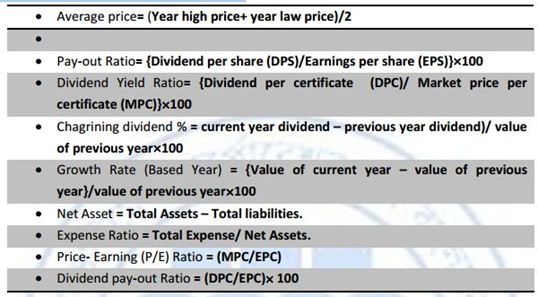
CALCULATION OF LAST TWO YEARS PERFORMANCE OF ICB MUTUAL FUNDS 1st Mutual fund

The above table shows the two year performance of the 1st mutual fund. In this table it is visible that the cost of portfolio has been increasing every year so as the market value. In 2014 the market value of the portfolio has increased most that is 60.34%.The earning per share in 2014 is 102.13 that is highest of the previous years and the lowest was in 2013 which is 75.63. In case of dividend the mutual fund also is improving its payment every year. In 2013 and 2014 the number of shares was 750000. The P/E ratio in 2014 is 8.93 but in 2013 it was 12.32. The highest dividend payout ratio was in 2013 and in 2014 it decreased to 78.33%. The most important fact is that the NAV of the 1st mutual fund increased much in 2014 compared to the year of 2013 which is1550.10.
The average market price has been found by dividing the 52 weeks highest and lowest price by two and it is also highest in 2014. The no. of certificate holders decreased to 805 in 2014 than 2013.
2nd Mutual Fund

The above table shows the two year performance of the 2nd mutual fund. In this table it is visible that the cost of portfolio has been increasing in 2014 from 2013 to 11.55 crore where the market value in this year increased that is 21.25 crore which was 17.34 crore in 2013. In 2014 the market value of the portfolio has increased most that is 22.55%.The earning per share in 2014 is 49.27 that is higher than 2013 which was 44.10. The no of shares has remained stable so far that is 500000. The P/E ratio in 2014 is 5.38 but in 2013 it was 6.93 despite the no of shares was stable. So the P/E ratio decreased from the last years. The dividend payout ratio was also higher in 2013 compare to 2014. The most important fact is that the NAV of the 2nd mutual fund increased much in 2014 compared to the year of 2013 which is267.21. The average market price has been found by dividing the 52 weeks highest and lowest price by two and it is also highest in 2014. The no. of certificate holders increased to 894.
3rd Mutual Fund

The above table shows the two year performance of the 3rd mutual fund. In this table it is visible that the cost of portfolio has been increasing from 2013 to 2014.Ithas increased to 13.46crore where the market value in this year increased that is 38.53 which was 27.51 in 2013. In 2014 the market value of the portfolio has increased most that is 40.06%.The earning per share in 2014 is 28.10 that is higher than 2013 which was 26.16. The no of shares has remained stable so far that is 1000000. The P/E ratio in 2014 is 8.06 but in 2013 it was 7.99 despite the no of shares was stable. So the P/E ratio increased creased from the last years. The dividend payout ratio was91.74 in 2013 and 88.97 in 2014 that mean dividend payout ratio decreased in the given no. of shares.
The most important fact is that the NAV of the 3rd mutual fund increased much in 2014 compared to the last year which is326.65. The average market price has been found by dividing the 52 weeks highest and lowest price by two and it also higher in 2014 than 2013 and it was 210.50 in 2014. The no. of certificate holders increased in this year that is 1214 in 2014 and 1202 in 2013.
4th Mutual Fund

The above table shows the two year performance of the 4th mutual fund. In this table it is visible that the cost of portfolio increased in 2014 which is 14.86 crore compare to 2013.The market value in this year also increased that is 36.15 which was 24.12in 2013.
In 2014 the market value of the portfolio has increased than 2013 that is 33.30%. The earning per share in 2014 is 33.17 that arehigher than the previous year and in 2013 it was 29.24. The no of shares has remained stable so far that is 1000000. The P/E ratio in 2014 is 6.63 but in 2013 it was 6.84 despite the no of shares was stable. So the P/E ratio decreased from the last year. The highest dividend payout ratio was in 2013 that is 82.08 and in 2014 it was 75.37 that mean dividend payout ratio decreased in the given no. of shares. The most important fact is that the NAV of the 4th mutual fund increased much in 2014 compared to the last year which are 299.29. The average market price has been found by dividing the 52 weeks highest and lowest price by two and it is also highest of the last years. The no. of certificate holders decreased in this year that is 1036 in 2014 and 1378 in 2013.
5th Mutual Fund

The above table shows the two year performance of the 5th mutual fund. In this table it is visible that the cost of portfolio has increased in 2014 than 2013 and the market value in this year alsoincreased that is 47.60 which was 35.02 in 2013. In 2014 the market value of the portfolio has increased most that is 36.15% from the previous year.
The earnings per share in 2014 is27.29 that is higher than of the previous year which was 23.45 in 2013. The no of shares has remained stable so far that is 1500000. The P/E ratio in 2014 is 6.78 but in 2013 it was 8.23 despite the no of shares was stable. So the P/E ratio decreased from the last year. The dividend payout ratio in 2014 was 93.44and in 2013 it was 85.29 that mean dividend payout ratio increased in the given no. of shares. The most important fact is that the NAV of the 5th mutual fund increased much in 2014 compared to the last year which are 254.49. The average market price has been found by dividing the 52 weeks highest and lowest price by two and it is also highest of the last year. The no. of certificate holders decreased in this year that is 2118 in 2014 and 2126 in 2013.
TEN YEAR PERFORMANCE ANALYSIS OF ICB’ MUTUAL FUND
Tables and Graph used for Analysis:
a) Price Earnings Ratio
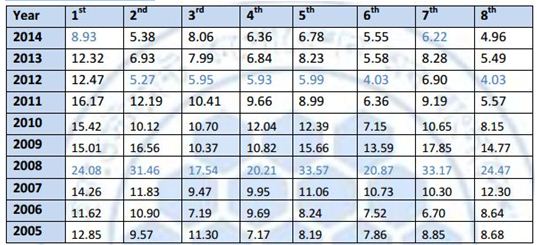
The P/E gives an idea of what the market is willing to pay for the company’s earnings. The higher the P/E the more the market is willing to pay for the company’s earnings. Some investors read a high P/E as an overpriced stock and that may be the case, however it can also indicate the market has high hopes for this stock’s future and has bid up the price.
Conversely, a low P/E may indicate a “vote of no confidence” by the market or it could mean this is a sleeper that the market has overlooked. Known as value stocks, many investors made their fortunes spotting these “diamonds in the rough” before the rest of the market discovered their true worth.
From the last ten years’ history of P/E ratio we can see that in 2010 the P/E ratio of the 1 st Mutual Fund has decreased than that of 2009 but it is also visible that in 2008 it reached at a highest point that was 24.08. So comparing with the P/E of 2008 it could not do better in the last few years. But most importantly the eight mutual funds P/E ratio is also lower in 2014 and other mutual funds also have a decreasing P/E ratio in 2014 than the previous year, only except 3 rd mutual funds.
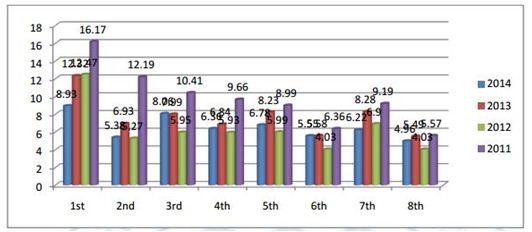
The above graph shows the last four years P/E ratios of the eight mutual funds.
b) Net Assets Value (NAV)
Net asset value (NAV): The NAV is the dollar value of one share of a fund. It’s calculated by totaling the value of the entire fund’s holdings plus money awaiting investment, subtracting operating expenses, and dividing by the number of outstanding shares. A fund’s NAV changes regularly, though day-to-day variations are usually small.
The NAV is the price per share an open-end mutual fund pays when you redeem, or sell back, your shares

% Change in Net Assets Value (NAV)
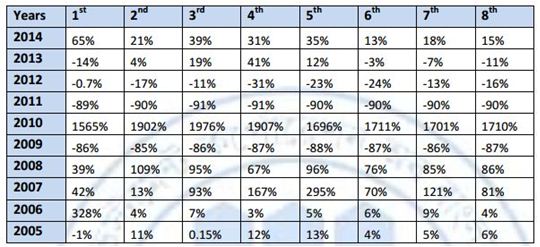
The NAV of the eight mutual funds have increased in 2010 in terms of the previous years and the growth is doubled. Again the growth had fall down in 2011 but in 2014 all the mutual funds NAV growth had increased.
C) Earnings per certificate
Earning per certificate means that how much mutual fund is earning from a particular certificate within a year. When the performance of mutual funds is well than it is automatically increase the earning per share.
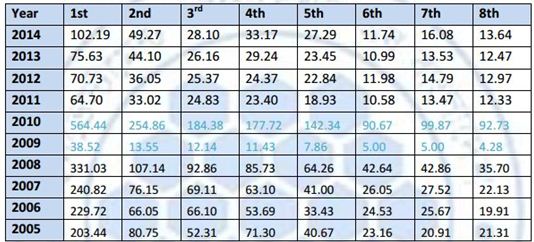
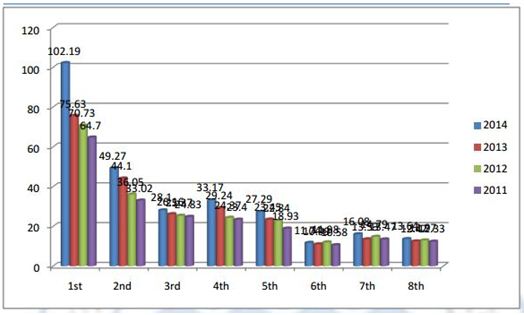
The ratio of Mutual fund has increased in 2008. From the investor’s point of view, if EPC increase, dividend per share will increase & the investors will be benefited from both capital gain & dividend. But, if EPC decreases then price per certificate will decrease, dividend per share will decrease & it will be bad for the investors.
From the funds point of view, increase of EPC is also good because the investors will have confidence on the fund & management team for their efficiency on the maintenance of the portfolio. If EPC decrease then it is bad because, investors will have no confidence on the fund & management team. In 2010 the Earnings per Certificates of all he mutual funds have increased that means they have done well in this year.
Customer Satisfaction and Performance Evaluation on ICB Mutual funds
SUMMARY
Investment Corporation of Bangladesh (ICB) is a well government organization in Bangladesh and its Mutual Funds are also well known. However, sometimes the customers may or may not very much satisfied on the mutual funds activities or their performance as well. This research part is discussed about the customer’s perception on ICB Mutual Funds.
SOURCE AND METHODOLOGY OF DATA COLLECTION:
The scope of the report was basically the operation and practice of Investment Corporation of Bangladesh and the performance of their Mutual funds. On the other hand, methodology can be termed as underlying principles and rules of organization or the philosophical systems that work at the backdrop of any study. It clarifies the problems involving the research in a very ordered and systematic fashion. Strategic are determined at this stage for future implementation. In this report decisions and calculations have been made basing on past experiences and the available data of past activities. These data can be collected in any one or more of the following ways.
Approaches and the methods that have been used to prepare the report are as follows:
Primary Data
Personal Interview: I interviewed some departmental officials especially those related to the financial operations of ICB.
Briefing sessions: Departmental heads or their approved officials gave briefs about their respective departments. Information gathered from these sessions has been used in this report.
Questionnaire Survey: I used different types of survey questionnaire to better attain the objective of the research project. I used 14 different questionnaires to attain the objective of this report by asking investors form different age.
Secondary Data
- Annual reports of ICB
- Dhaka Stock Exchange
- Stock Bangladesh
- Internet
DATA COLLECTION PROCIDURE
- Target Population: ICB has eight mutual funds and all the ICB Mutual Funds customer are my target population.
- Sample Size: A total 30 respondents have been conducted where all of the respondents are ICB Mutual Funds investors.
C.Sampling Type: I had survey on the mutual funds customers who comes in ICB main branch where I worked
SURVEY QUESTIONNAIRE ANALYSIS
1) ICB mutual funds play a vital role in the development of capital market.
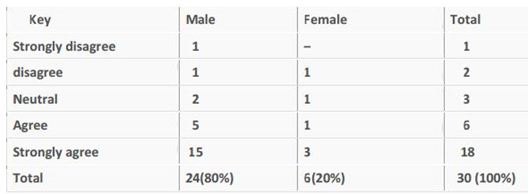
The answers of the respondents showed how ICB mutual funds play a vital role in the development of capital market. As the question was in the liker scale form started from strongly disagree and ends with the strongly agree. The respondents gave their opinion by ticking on these available options in the questionnaire. Majority of the respondents think that, ICB mutual funds play a vital role in the development of capital market. Findings of the survey showed that, 60% of the respondents strongly agree with the statements. 20% of the respondents agrees with this statement, 10% percent of the respondents were neutral in their opinion, 7% of the respondents showed this agreement with this statement and 3.33% of the respondents were strongly disagree with these statements.
2) ICB mutual funds contribute to the creation of brand value and loyalty of ICB.
A common question has been asked to all the interviews regarding the contribution of mutual funds in the creation of brand value and loyalty of Investment Corporation of Bangladesh which benefits the company in the long run to sustain in the competitive market place. The answers were mixed from the part of the respondents. Some respondents strongly agreed with the statements where as some gave disagreement with these statements.
FINDINGS FROM ANALYSIS
a) According the customers response ICB mutual fund is playing a vital role in the developing of capital market.
b) ICB mutual Funds have a strong contribution to the creation of brand value of ICB.
c) ICB Mutual funds have a good credit policy towards investors.
d) Service quality is very much satisfactory to the ICB Mutual Funds investors.
e) The survey shows that the investors are very much loyal to ICB.
f) Most of the customers think ICB mutual funds are free from risk than any other mutual fund.
g) Investors are very much aware about trust, safety and good amount of dividend as well, while they Chose ICB mutual Fund.
h) The survey shows that getting the dividend payment it is both time consuming and lengthy process.
CONCLUTION
Investment Corporation Bangladesh (ICB) has become an important entity in the capital market. ICB investor’s scheme helps to boost up domestic economy through facilitating to invest into the capital market .The purpose with which it launched its operation after the birth of this country has been almost achieved. The whole capital market is largely affected by ICB. The mutual funds have added a new dimension to it. These eight mutual funds performing very well in the capital market since they were launched and the investors to it are able to get their expected profit from their investment. Their history of Performance Evaluation proves that they are absolutely an attractive source of investment. Though there are some problems inherit in mutual fund like the services provided by the related personnel are not prompt, it is taking more than required time for giving the service, withdrawal of any funds of securities is also very lengthy and complicated process and inefficiently managed, these mutual funds seem to try hard to reduce them. The portfolio of all the mutual funds are managed with diligent and prudence to ensure maximization of return and minimization of risk in the interest of investors with due regard to growth of capital market in the country. Strong performance of the funds is reflected in the market price of the funds. All the mutual funds are traded significantly above per value in both the bourses. The floatation of mutual funds and issuance of unit certificates by the ICB strengthens the supply of attractive securities in Bangladesh capital market. Mutual fund management can manage the activities of mutual fund. ICB should concentrate to increase the performance of its mutual fund and way to find out the path for overcoming the problems of operations
ICB mutual funds are now perceived by investors as rewarding and relatively safe investment vehicle because of its strong and relatively steady performance in terms of dividend and portfolio management.
RECOMMENDATION
Dividend policy should be fair so that the investors may be satisfied. Dividend policy should be earnings basis, not year basis. There should be quick execution of orders ICB mutual funds should focus more on internal marketing so that customer satisfaction investing in costly borrowing funds should be reduced. Management may look for sources of less costly funds and reduce expenses and increase income. ICB mutual funds should make credit polity more flexible ICB mutual funds should introduce online transaction facilities so that investors can make transaction by sitting anywhere around the world. ICB may take initiative and decision to float more funds for the stabilization of capital market and for gaining of investor’s confidence to invest in the capital market. ICB Mutual Funds should reduce service charge of the account holders. Investing in costly borrowing funds should be reduced. Managing of ICB Mutual dividend and ICB portfolio should be strong and fast, ICB mutual funds Should improve the advocacy to the investors, ICB should create customers database and continuously informing the investors about the available facilities or opportunities which will work to achieve twin goal at a time; one is direct marketing and another is large pool of customers database ICB mutual funds Can involve itself in creating awareness about social causes, ICB mutual funds can take project to make this living planet sustainable like tree plantation project. ICB mutual funds should transform the activities from manual to online and digital can introduce the SMS system to inform the investors about the updated price of share, Should increase the benefits of the employees because employee satisfaction is directly related with the customer.







